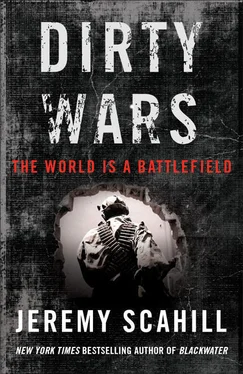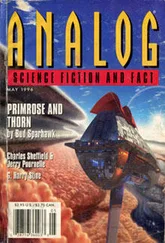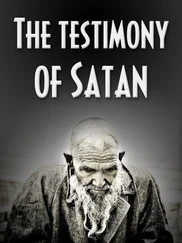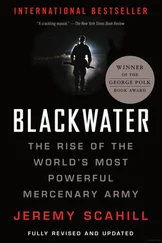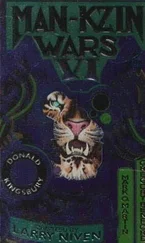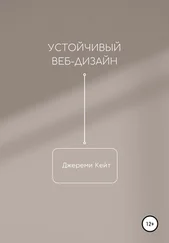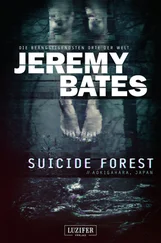The insertion of Special Ops personnel into US embassies under the cover of Military Liaison Elements (MLE) was extremely controversial with the CIA and State Department. But JSOC personnel were not limited to those operating with official cover. It also had operatives deploying in various countries under “non-official cover,” at times using fake identities backed up by falsified passports, sometimes from other nations. Their job was to help prepare the battlefield for JSOC operations, and they often did not coordinate with the CIA or the ambassadors. If the SOCOM “presence in U.S. embassies abroad is an effort to pave the way for unilateral U.S. military operations or to enable defense elements to engage in covert action activities separate from the CIA, U.S. problems abroad will be certain to increase significantly,” said John Brennan, a career CIA officer who spent a quarter of a century at the Agency and at the time ran the National Counterterrorism Center. The use of MLE posts as cover for JSOC, combined with Cambone’s intelligence operation, was seen by some on the civilian side of the war effort as a dangerous precedent. But Lieutenant General Boykin, the undersecretary of defense for intelligence, shot back at the program’s critics, blasting what he called “an assumption that what the secretary is trying to say is, ‘Get the CIA out of this business, and we’ll take it.’ I don’t interpret it that way at all.” Instead, he asserted, “The secretary actually has more responsibility to collect intelligence for the national foreign intelligence program” than “the CIA director.”
It was during this period that Rumsfeld, Cambone and JSOC ran roughshod over the “covert” versus “clandestine” divide and did so with the backing of the White House. The Pentagon began defining “coordination” with the CIA as giving the Agency a seventy-two-hour heads-up that JSOC would be conducting an operation, and Cambone altered the definition of military “deployment orders,” which are required to be provided to Congress. Cambone issued new guidelines that asserted the right of Special Ops Forces to “conduct clandestine HUMINT operations” before alerting Congress. Not only was the CIA being boxed out of operations it historically held sovereignty over, but the use of JSOC to conduct intelligence operations kept Congress even further at bay. Combined with the Copper Green program, this effectively meant that JSOC was free to act as a spy agency and a kill/capture force rolled into one. Even some well-connected Republican allies of the White House were disturbed by what they were witnessing. “Operations the CIA runs have one set of restrictions and oversight, and the military has another,” a Republican member of Congress “with a substantial role in national security oversight” told the Washington Post . “It sounds like there’s an angle here of, ‘Let’s get around having any oversight by having the military do something that normally the [CIA] does, and not tell anybody.’ That immediately raises all kinds of red flags for me. Why aren’t they telling us?”
Rumsfeld and his aides knew the CIA’s paramilitary arm was far too small to conduct a global war, and once the case was made to Bush that the Special Operations Command should have a global mandate as its own command, it was a done deal. In addition to Rumsfeld’s AQN-ExOrd, he persuaded President Bush to insert language into National Security Presidential Directive-38 (NSPD-38) that would codify SOCOM’s global role in finding, fixing and finishing off terror suspects. NSPD-38’s declassified description is as the “National Strategy to Secure Cyberspace.” Yet the directive, which remains classified, gave unprecedented latitude for JSOC to hit across the globe, effectively pre-authorizing lethal operations outside of any stated battlefield. “There are a lot of things in NSPD-38 that are not cyber related,” a Special Operations source told me, adding that authorization for Special Ops activities “were slipped in before signature.” Among these was a “broad authorization to launch Find, Fix, Finish operations with SOCOM in the lead.” He added that the classified directive was a “close hold” and estimated that “there are maybe five copies [that are] all in the physical NSC office space. Everyone jokes about the man-sized safe.”
The global manhunt that JSOC was now fully empowered to engage in had multiple tracks. JSOC developed target lists of various al Qaeda figures they had authority to pursue globally, lists of “irreconcilables” who could be assassinated, others they would allow to move freely in an effort to gather intel on their contacts or cells. Although some may have seen what was happening in Iraq and Afghanistan with TF-121 as scandalous, it was in many ways the definitive vision of the type of wars Rumsfeld and Cheney had longed for: no accountability, maximum secrecy and total flexibility.
Scott Horton, the human rights lawyer, said the program “parallels something that the OSS [Office of Strategic Services] did during the Second World War, and that CIA did subsequently. Now, to a certain extent, the function is not unusual. It’s not unusual for the military to have commandos who, in a theater of war, will seek out enemy command and control, with the purpose of identifying them and then killing them. And yes, that could be walking into a café and shooting somebody. And that would be traditional, authorized warfare.” But, he added, “What’s different here, is that suddenly the theater of war has become the entire globe—it’s become everywhere. And they’re looking at the possibility of assassinating people in Hamburg, Germany, in Norway, in Italy, as well as in Morocco, Jordan, Senegal, Turkey, Yemen, the Philippines and places in the African Horn. And, I’d say, in terms of law—it’s pretty plainly illegal once you’re outside of the normal theater of war.”
At the end of 2004, Rumsfeld wrote a memo to his top advisers, including Cambone and Douglas Feith. It was classified FOUO, For Official Use Only, with the subject “Preparation of the Battlespace.” In the memo, Rumsfeld wrote that he was concerned that “the old phrase ‘preparation of the battlespace’ may no longer be appropriate terminology.” Today, Rumsfeld declared, “the entire world is the ‘battlespace.’”
THE USE OF WEAPONIZED DRONES was still in its nascent stage in the global US wars, but surveillance drones had been in operation for years. The JSOC task force began using a system McChrystal’s intelligence deputy Mike Flynn referred to as “The Unblinking Eye,” in which drones and other aircraft would hover in a “long dwell airborne stakeout” to “apply multisensor observation 24/7 to achieve a greater understanding of how the enemy’s network operates by building a pattern of life analysis” that could be used to conduct raids. Using what Flynn called “nodal analysis,” patterns of movement were developed by tracking people suspected of being affiliated with an insurgent group or cell. Nodal analysis, Flynn believed, would have “the effect of taking a shadowy foe and revealing his physical infrastructure for things such as funding, meetings, headquarters, media outlets, and weapons supply points. As a result, the network becomes more visible and vulnerable, thus negating the enemy’s asymmetric advantage of denying a target.” He added, “The payoff of this analysis is huge but requires patience to allow the network’s picture to develop over a long term and accept the accompanying risk of potentially losing the prey.” Finally, the task force would conduct “vehicle follows,” where they would monitor the movement of vehicles believed to be used by insurgents. At times, the task force would use three combat air patrols to surveil a target or a group of people. “It is not enough to have several eyes on a target—several eyes are needed on a target for a long period,” Flynn asserted. This approach would allow for “persistent surveillance of a target while simultaneously developing the network’s pattern of life through nodal analysis and vehicle follows. It gives the finishing force commander more options than merely killing or letting an observed enemy go; with sufficient ISR [Intelligence, Surveillance, Reconnaissance], a ground force commander can demonstrate much greater operational patience, thus allowing a larger insurgent network to emerge.” What differentiated the JSOC forces from the conventional military, Flynn said, was that big army “forces tend to cover disparate targets for a shorter period than SOF, which tend to focus collection on a smaller number of targets for much longer.” JSOC needed to understand “pattern[s] of life of an enemy network.”
Читать дальше
